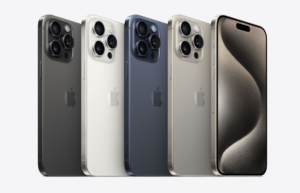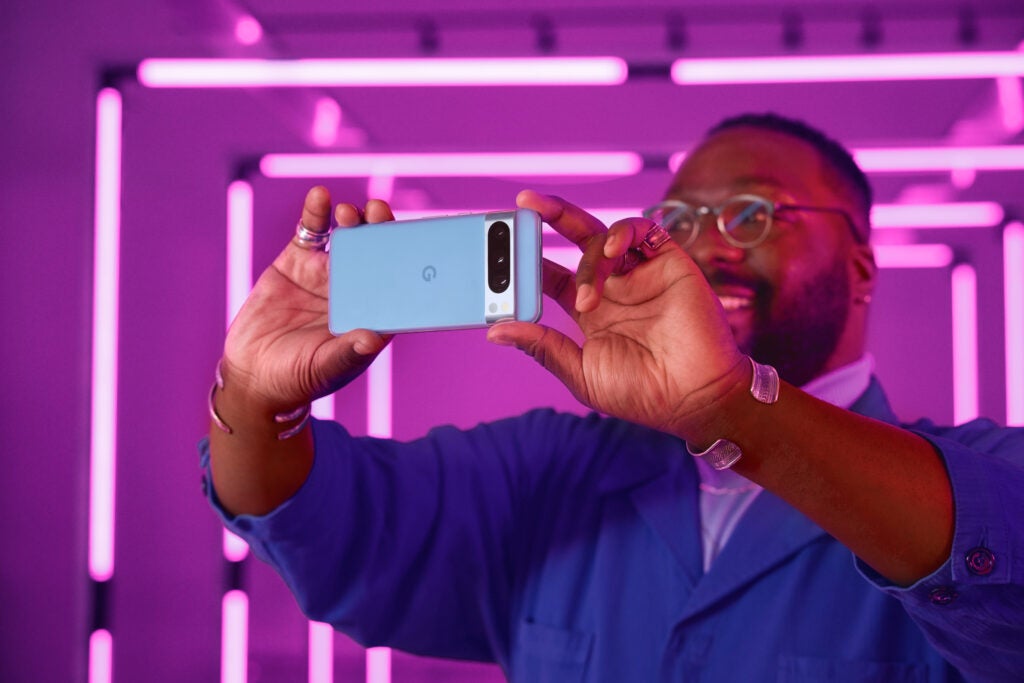Google has officially announced the Google Pixel 8 Pro, a new high-end flagship smartphone from the Pixel range.
Google has fitted the phone with numerous upgrades compared to the older Google Pixel 7 Pro. But are they enough to convince you to upgrade?
We’ve created this comparison guide to highlight the most important differences between the Google Pixel 8 Pro and the Google Pixel 7 Pro, so keep on reading to find out the most exciting upgrades.
Pixel 8 Pro is powered by the Tensor G3 chip
The most notable upgrade for the Google Pixel 8 Pro is the new Tensor G3 processor, which should provide a big performance boost compared to the preceding Tensor G2 chip inside the Pixel 7 series. The Tensor G3 chip is built on a 4nm process, which is an upgrade on the larger and less efficient 5nm process of the G2.
The new Tensor G3 chip has 9 cores and a max clock speed of 2914MHz. For comparison, the older G2 chip has 8 cores and a max clock speed of 2850MHz. The new GPU should also boost graphics power, with 10 cores and support for hardware-based ray tracing.
The Tensor G3 chip also has boosted AI performance, with Google claiming the Pixel 8 Pro can now detect and filter out more spam calls, while also improving Clear Call to prevent background noise disturbing your chats.

iPhone 15 Pro Max contract is an undeniable bargain
Looking for a cheaper way to get the iPhone 15 Pro Max? Mobiles UK has the answer. It’s £249.99 down and then £43.99 a month for 100GB of monthly data.
- Mobiles UK
- 100GB data
- £43.99 a month
Improved camera
The Google Pixel 8 Pro and Google Pixel 7 Pro share the same 50MP rear wide lens, although Google says there’s now 21% more light sensitivity for low-light shots. Google claims there’s faster autofocus now too, especially in low-light conditions.
The Google 7 Pro features a 12MP ultrawide camera with autofocus, whereas the Google Pixel 8 Pro has a 48MP ultrawide camera with ‘upgraded’ autofocus instead. Google says this lens captures 105% more light than that on the Pixel 7 Pro, while also being able to focus 30% closer for improved Macro Focus performance.
Video quality has been improved too, with Real Tone offering more accurate capture of human skin tones, while Video Boost uses computational power to improve the quality of recorded video. Night Sight Video will also enhance the quality of videos in dark environments.

Pixel 8 Pro has a thermometer
One new Google Pixel 8 Pro feature that caught us by surprise is the inclusion of a thermometer, allowing you to check your temperature with a smartphone.
By having a thermometer integrated into the smartphone, users will be able to quickly check whether they have a high temperature and need to call in sick. It should be a useful tool to have, as very few people carry a thermometer around with them on a daily basis.
Google has demonstrated that using the thermometer is an easy process, as you simply hover the phone above your forehead or temple, and hold it in place until you feel the phone vibrate. Then you’ll be given a temperature reading.
The Google Pixel 7 Pro lacks this feature, so you’ll need to purchase the latest iteration of Google’s Pro series in order to benefit from the integrated thermometer.
New colour options
Google has spiced up the colour options for the Pixel 8 Pro, with only Obsidian Black making the cut from the previous generation. That means the Snow and Hazel colourways of the Google Pixel 7 Pro will not be available this time round.
Instead, Google is introducing the new Bay Blue and Porcelain colour options, arguably making the phones look brighter than their predecessors. Otherwise, the design hasn’t changed much, with a metal band that houses the cameras running across the rear of the phone. The same Google logo can also be found on the back.
Whether these new colour options are a good or bad tweak will come down to personal preference, although the Trusted Reviews team is a big fan of the new blue design.




